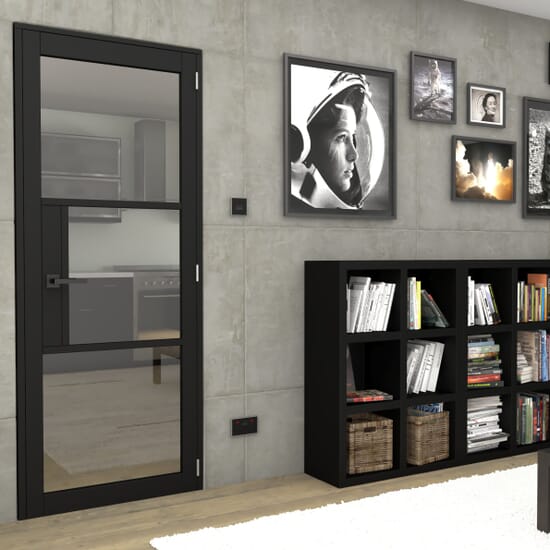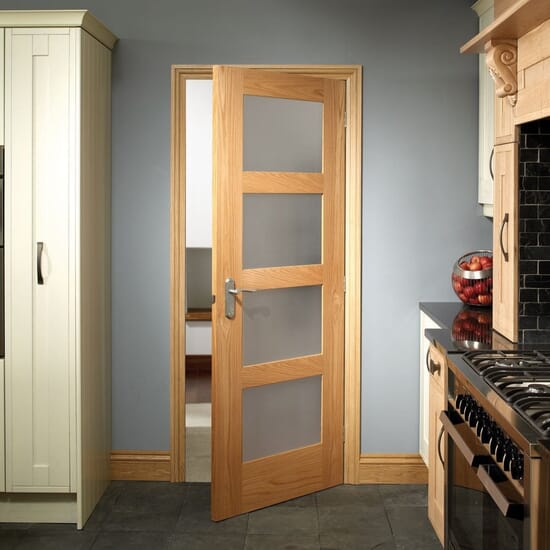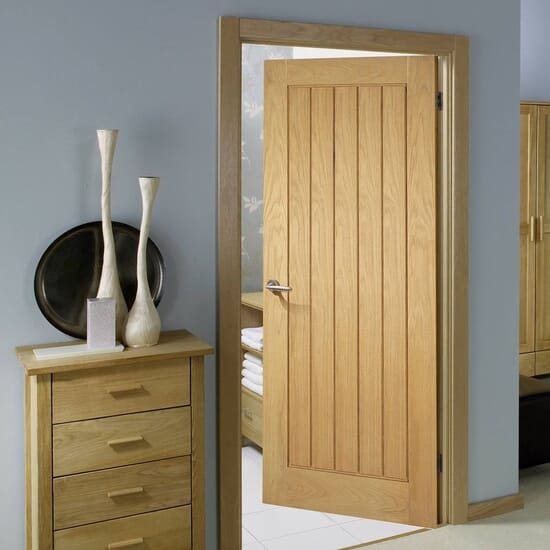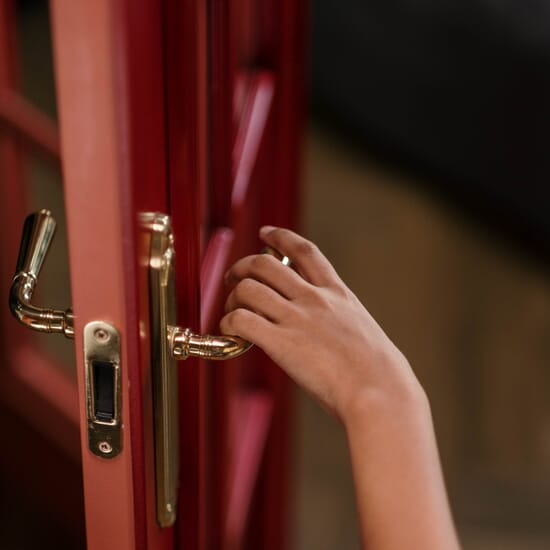Door Sill
The door sill is the part of the door frame that sits directly onto the foundation of the floor. It is hidden under the threshold, and in external doors it is the part that serves as the weatherproofing, allowing rainwater to run off.
Door Frame
The door frame is the part that goes around the inside of the door, that the jamb and the hinges are screwed into. The frame is usually made of wood, and the door itself should fit snugly into it.
Door Threshold
The threshold is the metal covering that sits across the foot of the door. The threshold is usually slightly angled, to allow different floor levels to join together in a smooth transition. A higher threshold will offer more weather protection.
Rails
Usually, internal bifold doors will have a single rail, but double rail doors are not unheard of, and are quite common for exterior doors, where the additional security really matters.
Finish Floor Level
The finish floor level is the level of the floor, including anything that covers it (such as laminate flooring or even carpets). This is important because you will need to take it into account when determining the size of the door and the thresholds.
Folds
Technically, a bifold door should hinge in two places, or have two folds. However, a lot of people use the term ‘bifold’ to refer to any door that folds on itself, including ones with more folds.
Panel
Each part of the door is a separate panel. Usually, a bifold door will have an odd number of panels (most often three, sometimes five) but it is possible to buy doors with more or fewer panels.
It’s not a good idea to use an even number of panels, because this changes the way that the door folds – it means that whenever you want to open the door at all, you have to open two doors rather than just one. That may seem like a small thing, but over time that will become frustrating. Stick with three panels for an average sized door, or five for a bigger door, for less hassle.
Rough Opening
The rough opening is the entire door cavity, not including the frame. You’re unlikely to need to worry about this unless you are renovating a room completely and have taken the frame out. For the most part, when you are buying a bifold door, you are just buying the door itself, and it fits into the frame, so the measurement including the frame is all you need to care about. Sometimes, when you are buying a standard door, you will buy the door plus the frame (a pre-hung door), and that’s when you’d need to know the size of the rough opening.
Concertina
Concertina doors is a term many use to describe bifold doors. The concertina part of the name refers to the opening style of the doors, as bifold doors fold open in the same way as the musical instrument.
Finished Door
A finished door is a door that has been sanded/primed and painted or stained, and is ready to hang. Most people buy bifold doors that are finished.
Pre-Finished Door
Pre-finished doors are doors that have been sanded and/or primed, but that have not had the final layer of paint put on them yet. If you are planning on painting the door an unusual color, then you should probably buy a pre-finished door then paint it yourself. This will save you a lot of time compared to buying a bare door and having to prepare the surface, put the undercoat on, wait for it to dry and then start painting.
Unfinished Door
Unfinished doors are plain wooden doors that have not had anything done to them in terms of colour or treatment. These are the least expensive type of door to buy for the most part, but you should remember that you will need to pay for primer/undercoat and stain or paint, and that can get expensive. It’s also quite time consuming to paint the door before you hang it. Sometimes, the convenience of a finished door is worth the expense.
Scheme
There are a number of different schemes for bifold doors. The word ‘scheme’ refers to the number of doors that the system has, and the way they are handled, when viewed from the outside. Each scheme is made up of three digits, and they work like this:
- The first digit refers to the number of doors
- The second digit refers to the number of doors that will slide to the left
- The second digit refers to the number of doors that slide to the right.
So, a scheme 303 door set has three doors, that all open to the right. A Scheme 321 set has three doors, two of which fold to the left, and one of which opens to the right. It’s very rate to see a set of folding doors with more than seven doors in it, and there are a lot of different possible configurations; from 743 to 707 at that size. The scheme is perhaps the most important thing to look at when you’re buying a bigger door.
In Summary
As you can see, there’s a lot to think about before you purchase a set of internal bifold doors. The bifold door size, style, weight, and configuration all matter, and the more you know about the doors before you buy them, the better decisions you will be able to make about how easy they will be to fit, too. If you have any questions about the doors you are looking at, get in touch with the sales team – they’d be happy to help you understand the different designs available, and to give their opinion on the best choice for your room.







